Indian Spices
Cardamom

Cardamom, with its sweet and aromatic flavor, is a prized spice with both culinary and medicinal uses. Rich in essential oils, cardamom is known for its digestive benefits, alleviating indigestion and bloating. It contains antioxidants that may contribute to heart health and may have anti-inflammatory properties. Cardamom’s delightful scent makes it a popular addition to desserts, chai, and various culinary creations, offering both a fragrant experience and potential healthful effects.
Dried Chillie
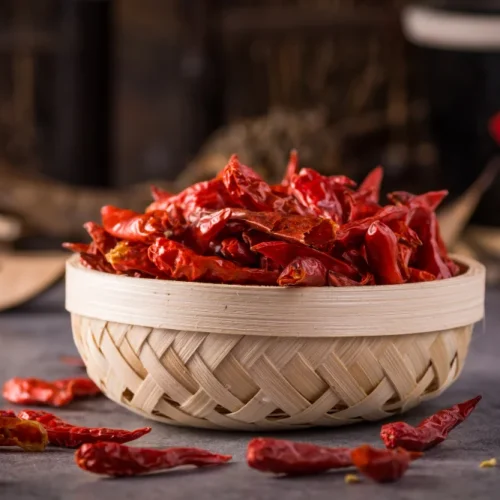
Dried Chilies, whether whole or ground, are more than just a spice; they are a flavor enhancer with potential health benefits. Packed with capsaicin, dried chilies offer metabolism-boosting properties and may have pain-relieving effects. They also contain antioxidants that contribute to overall well-being. Dried chilies add depth and heat to a variety of dishes, showcasing their versatility in culinary creations and potential healthful effects.
Pepper
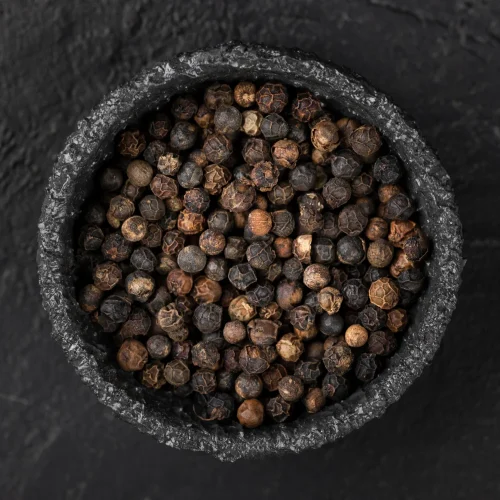
Pepper, with its bold and spicy flavor, is not just a table condiment but also a source of potential health benefits. Rich in piperine, black pepper has antioxidant and anti-inflammatory properties. It may enhance digestion by stimulating enzymes and supporting gut health. Pepper is a versatile spice, enhancing the taste of savory dishes, salads, and even desserts, offering a culinary delight along with potential healthful effects.
Ginger
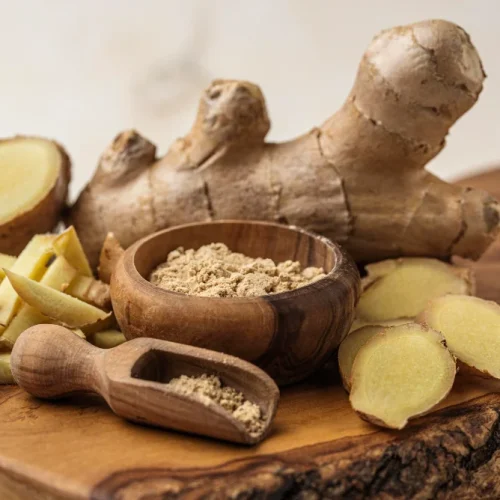
Ginger, with its zesty and warm flavor, is not just a culinary marvel but also a medicinal powerhouse. Rich in bioactive compounds like gingerol, ginger boasts anti-inflammatory and antioxidant properties. It has been traditionally used to alleviate nausea, aid digestion, and reduce muscle soreness. Ginger may also contribute to immune support and help manage oxidative stress. Whether grated fresh in teas, used in cooking, or incorporated into desserts, ginger adds a spicy kick and a potential array of health benefits to your culinary repertoire.
Turmeric
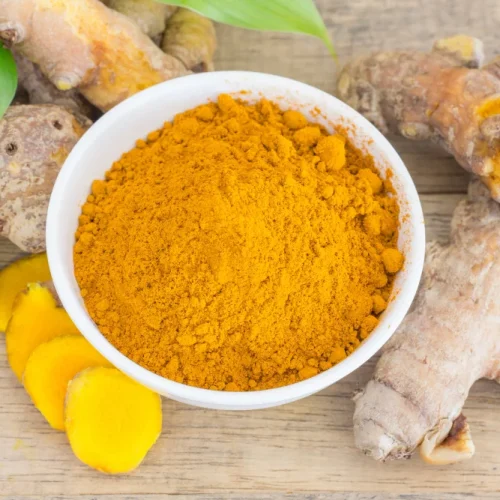
Turmeric, with its vibrant yellow color, is a spice revered for its curcumin content. Curcumin is a potent anti-inflammatory and antioxidant compound with potential benefits for joint health and overall well-being. Turmeric is also known for its traditional use in Ayurvedic medicine for various ailments. Whether used in curries, teas, or golden milk lattes, turmeric adds a warm and earthy flavor along with a potential array of health benefits to your culinary repertoire.
Coriander
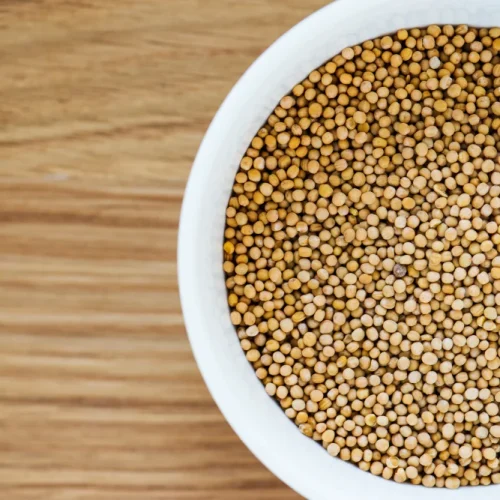
Coriander, with its citrusy and herbal notes, is more than just a spice; it’s a source of potential health benefits. Rich in antioxidants, coriander may contribute to heart health and overall well-being. It has been traditionally used for its digestive properties, aiding in alleviating bloating and indigestion. Coriander’s versatility makes it a staple in various cuisines, providing both flavor and potential healthful effects.
Bishops weed

Bishops Weed, also known as ajwain, is a spice with a distinctive flavor profile and potential health benefits. Rich in essential oils, ajwain is believed to aid digestion, alleviate gas, and have antimicrobial properties. It has been traditionally used in Ayurvedic medicine for its carminative and digestive properties. Whether used in savory dishes, bread, or herbal concoctions, bishops weed adds a unique taste and a potential range of healthful effects to culinary creations.
Cinnamon

Cinnamon, with its sweet and warm aroma, is a spice celebrated for both its flavor and potential health benefits. Rich in antioxidants, cinnamon may have anti-inflammatory effects and contribute to heart health. It is known for its traditional use in helping regulate blood sugar levels. Whether sprinkled on desserts, added to beverages, or incorporated into savory dishes, cinnamon adds a delightful taste and a potential array of healthful benefits to your culinary repertoire.
Celery

Celery, with its crisp texture and mild flavor, is not just a crunchy snack but also a source of potential health benefits. Rich in antioxidants, celery may contribute to overall well-being and has been associated with anti-inflammatory effects. It is low in calories and a good source of hydration, making it a healthy addition to salads, soups, and snacks. Celery’s versatility and potential healthful effects make it a valuable ingredient in a balanced diet.
Mint
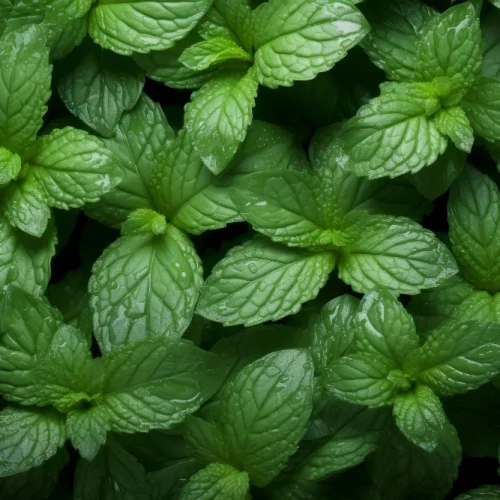
Mint, with its refreshing and cooling flavor, is more than just a culinary herb; it’s a source of potential health benefits. Rich in menthol, mint may help alleviate digestive discomfort and support respiratory health. It has been traditionally used for its calming properties. Whether used in teas, salads, or desserts, mint adds a burst of freshness along with a potential range of healthful effects to your culinary creations.
Garlic

Garlic, with its pungent aroma and robust taste, is more than just a culinary staple; it’s a nutritional powerhouse. Rich in allicin, garlic exhibits antimicrobial and immune-boosting properties. It is known for potential cardiovascular benefits, including lowering cholesterol levels and supporting heart health. Garlic is also rich in antioxidants that may contribute to overall well-being. Whether minced in savory dishes, roasted, or consumed in various culinary forms, garlic adds depth of flavor along with a host of potential healthful effects.
Mace

Mace, with its warm and aromatic flavor, is a spice derived from the outer covering of nutmeg seeds. Rich in essential oils, mace may have digestive benefits and has been traditionally used to alleviate nausea. It contains antioxidants that contribute to overall well-being. Mace’s unique taste makes it a prized addition to sweet and savory dishes, offering both culinary delight and potential healthful effects.
Curry leaves
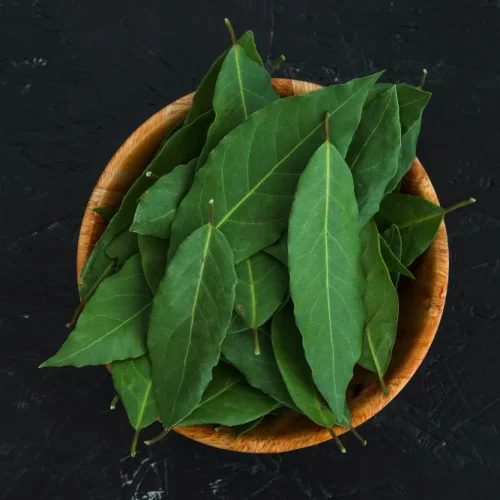
Curry Leaves, with their distinctive aroma and flavor, are not just a flavor enhancer; they also offer potential health benefits. Rich in antioxidants, curry leaves may contribute to heart health and have anti-inflammatory properties. They have been traditionally used in Ayurvedic medicine for their digestive benefits. Whether used in curries, stews, or as a seasoning, curry leaves add a unique taste and a potential array of healthful effects to culinary creations.
Star anise
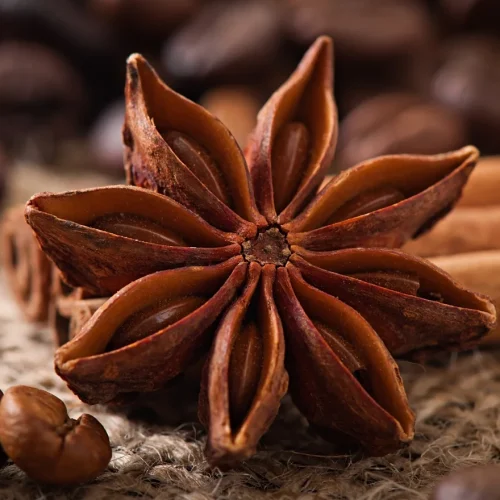
Star Anise, with its licorice-like flavor and star-shaped appearance, is a spice with both culinary and potential health benefits. Rich in antioxidants, star anise may have anti-inflammatory properties and contribute to overall well-being. It is often used in traditional medicine for its digestive benefits. Whether used in soups, stews, or desserts, star anise adds a distinctive taste and a potential range of healthful effects to your culinary repertoire.
Saffron

Saffron, with its vibrant red threads, is a spice known for its luxurious aroma and potential health benefits. Rich in antioxidants, saffron may have mood-enhancing and anti-inflammatory effects. It has been traditionally used for its calming properties. Whether infused in teas, used in rice dishes, or added to desserts, saffron imparts a unique flavor and a potential array of healthful benefits to culinary creations.
Vanilla

Vanilla, with its sweet and comforting aroma, is more than just a flavoring agent; it’s a source of potential health benefits. Rich in antioxidants, vanilla may have anti-inflammatory effects and contribute to overall well-being. It has been traditionally used for its calming properties. Whether used in desserts, beverages, or savory dishes, vanilla adds a delightful taste and a potential range of healthful effects to your culinary repertoire.
Asafoetida

Asafoetida, with its pungent aroma, is a spice known for both its flavor-enhancing properties and potential health benefits. Rich in antioxidants, asafoetida may have anti-inflammatory effects and contribute to digestive health. It has been traditionally used in Ayurvedic medicine for its digestive and respiratory benefits. Whether used in curries, lentil dishes, or pickles, asafoetida adds a distinctive taste and a potential range of healthful effects to culinary creations.
Nutmeg

Nutmeg, with its warm and nutty flavor, is a spice that goes beyond culinary uses; it offers potential health benefits. Rich in essential oils, nutmeg may have digestive benefits and has been traditionally used for its calming properties. It contains antioxidants that contribute to overall well-being. Whether grated into sweet dishes, added to savory recipes, or used in beverages, nutmeg adds a distinct taste and a potential array of healthful effects to your culinary repertoire.
Clove

Clove, with its intense and aromatic flavor, is a spice that not only enhances dishes but also offers potential health benefits. Rich in antioxidants, cloves may have anti-inflammatory effects and contribute to overall well-being. They have been traditionally used for their potential analgesic properties. Whether used in spice blends, teas, or added to savory and sweet dishes, cloves add a unique taste and a potential range of healthful effects to culinary creations.
Pepper long

Pepper Long, also known as Indian long pepper, is a spice with a pungent and slightly sweet taste, offering both culinary and potential health benefits. Rich in antioxidants, long pepper may have anti-inflammatory effects and contribute to overall well-being. It has been traditionally used in Ayurvedic medicine for respiratory and digestive benefits. Whether used in spice blends, teas, or incorporated into savory dishes, long pepper adds a distinctive taste and a potential array of healthful effects to your culinary repertoire.
Red Chilly Powder

Red Chilly Powder, with its fiery and vibrant hue, is a spice that goes beyond adding heat to dishes. Capsaicin, the active compound in chili peppers, is known for its metabolism-boosting properties and potential pain-relieving effects. Red Chilly Powder is rich in antioxidants and may contribute to heart health. Its versatility makes it a staple in various cuisines, adding not only spiciness but also a potential range of health benefits to your culinary creations.
Crush or Ground Genus Capsicum
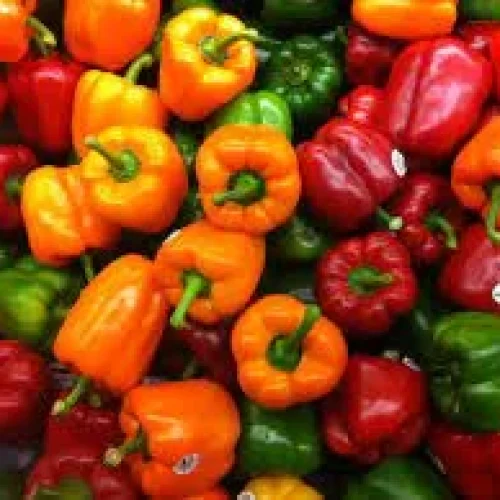
Crush or Ground Genus Capsicum, commonly known as crushed red pepper, is a flavorful spice that brings both heat and depth to dishes. Similar to red chilly powder, crushed red pepper contains capsaicin, offering potential metabolism-boosting effects. It also provides a source of antioxidants and may have anti-inflammatory properties. Whether sprinkled on pizzas, pasta, or incorporated into marinades, crushed red pepper not only elevates the spice level but also introduces potential healthful benefits.
